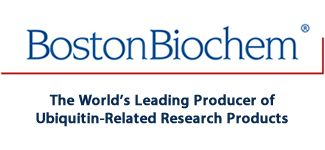
Recombinant Human Tau K18/Tau PHF Core Protein, CF Summary
Product Datasheets
Carrier Free
CF stands for Carrier Free (CF). We typically add Bovine Serum Albumin (BSA) as a carrier protein to our recombinant proteins.Adding a carrier protein enhances protein stability, increases shelf-life, and allows the recombinant protein to be stored at a more dilute concentration.The carrier free version does not contain BSA.
In general, we advise purchasing the recombinant protein with BSA for use in cell or tissue culture, or as an ELISA standard.In contrast, the carrier free protein is recommended for applications, in which the presence of BSA could interfere.
SP-496
| Formulation | X mg/ml (XμM) in PBS pH 7.4 |
| Shipping | The product is shipped with dry ice or equivalent. Upon receipt, store it immediately at the temperature recommended below. |
| Stability & Storage: | Use a manual defrost freezer and avoid repeated freeze-thaw cycles.
|
Reconstitution Calculator
Background: Tau
Tau is a microtubule-associated protein expressed primarily in neurons. Carboxy-terminal domains of Tau associate with and stabilize microtubule structure, while other domains bind to the plasma membrane. Abnormal Tau phosphorylationmay result in the self-assembly of tangles of paired helical and/or straight filaments, which are involved in the pathogenesis of Alzheimer"s disease and other neurodegenerative diseases. Properly folded Tau is highly soluble, but when the protein becomes misfolded it forms insoluble aggregates that can damage cytoplasmic functions, interfere with axonal transport and ultimately lead to cell death. This recombinant protein is untagged and consists of amino acids 243-372 of UniProt # P10636-8.
- Billingsley M.L. & Kincaid R.L.(1997) Biochem. J. 323:577
- Bloom G.S. (2014) JAMA Neurol. 71: 505
- Cripps D. et al.(2006) J. Biol. Chem. 281: 10825
- Harada A. et al (1994) Nature 369: 488
- Lei P. et al. (2010) Int. J. Biochem. Cell Biol. 42: 1775
- Shamas S.L. et al. (2015) Nat. Comm. doi: 10.1038/ncomms8025
FAQs
No product specific FAQs exist for this product, however you may
View all Proteins and Enzyme FAQsReviews for Recombinant Human Tau K18/Tau PHF Core Protein, CF
There are currently no reviews for this product. Be the first toreview Recombinant Human Tau K18/Tau PHF Core Protein, CF and earn rewards!
Have you used Recombinant Human Tau K18/Tau PHF Core Protein, CF?
Submit a review and receive an Amazon gift card.
$25/€18/£15/$25CAN/¥75 Yuan/¥1250 Yen for a review with an image
$10/€7/£6/$10 CAD/¥70 Yuan/¥1110 Yen for a review without an image
ebiomall.com






>
>
>
>
>
>
>
>
>
>
>
>
1.若都为正常,那么并未有太大问题,只要定期复查就可以了。
2.如果TGAb、TMAb、甲状腺功能均高,那么就是桥本氏甲状腺炎并甲亢,需要抗甲亢治疗。
3.如果TGAb、TMAb高,甲状腺功能下降,那么就是桥本氏甲状腺炎并甲减,需要进行甲减治疗。
4.如果TGAb、TMAb高,甲状腺功能正常,那么就是桥本氏甲状腺炎,无需特殊治疗,只要定期复查甲状腺功能就可能以了,不过这种情况有可能以后演变成甲减或者甲亢。
1.若都为正常,那么并未有太大问题,只要定期复查就可以了。
2.如果TGAb、TMAb、甲状腺功能均高,那么就是桥本氏甲状腺炎并甲亢,需要抗甲亢治疗。
3.如果TGAb、TMAb高,甲状腺功能下降,那么就是桥本氏甲状腺炎并甲减,需要进行甲减治疗。
4.如果TGAb、TMAb高,甲状腺功能正常,那么就是桥本氏甲状腺炎,无需特殊治疗,只要定期复查甲状腺功能就可能以了,不过这种情况有可能以后演变成甲减或者甲亢。
(Hypertension,2004,43:297-305)
2月5日 过氧化物酶体增生物激活受体γ(PPARγ)是一种属于核激素受体超家族的配体激活转录因子。在巨噬细胞、内皮细胞和血管平滑肌细胞中均有表达。它调节与脂质代谢、血管炎症和促成动脉粥样硬化及血管成形术后再狭窄的增生有关的主要蛋白的基因表达。PPARγ合成配体的发现加深了人们对其配体依赖性激活和之后的生物效应机制的认识,特别是有关PPARγ在血管病理生理学中作用的认识。噻唑烷二酮PPARγ激动剂不仅改善了2型糖尿病患者的胰岛素耐药性,而且在离体情况下或动脉粥样硬化动物模型中均有广谱的抗动脉粥样硬化效应。
美国加州大学洛杉矶分校的Willa A. Hsueh博士及其同事总结了PPARγ作为噻唑烷二酮分子靶点的重要作用以及在控制血管炎症和心血管系统增生方面的意义。
Peroxisome Proliferator-Activated Receptor: Implications for Cardiovascular Disease
Willa A. Hsueh; Dennis Bruemmer
From Division of Endocrinology, Diabetes, and Hypertension, David Geffen School of Medicine, University of California, Los Angeles.
Correspondence to Willa A. Hsueh, Division of Endocrinology, Diabetes, and Hypertension, David Geffen School of Medicine, University of California, Los Angeles Warren Hall, Suite 24–130, 900 Veteran Avenue, Los Angeles, CA 90095. E-mail whsueh@mednet.ucla.edu
Abstract
Peroxisome proliferator-activated receptor(PPAR ) is a ligand-activated transcription factor belonging to the nuclear hormone receptor superfamily. PPARis expressed by macrophages, endothelial cells, and vascular smooth muscle cells. It regulates gene expression of key proteins involved in lipid metabolism, vascular inflammation, and proliferation contributing to atherogenesis and postangioplasty restenosis. The discovery of synthetic ligands for PPARhas led to significant enhancement of our understanding of the mechanism of their ligand-dependent activation and subsequent biological effects, particularly with respect to the role of PPARin vascular pathophysiology. The thiazolidinedione PPARagonists not only improve insulin resistance in patients with type II diabetes but also exert a broad spectrum of antiatherogenic effects in vitro and in animal models of atherosclerosis. In this review, we summarize the important role of PPARas a molecular target for thiazolidinediones and its implications for the control of vascular inflammation and proliferation for the cardiovascular system.
Key Words: atherosclerosis • diabetes mellitus • peroxisome proliferator-activated receptor • angiotensin • inflammation
相关链接:http://hyper.ahajournals.org/cgi/content/abstract/43/2/297?maxtoshow=&HITS=10&hits=10&RESULTFORMAT=&fulltext=PPAR&searchid=1076561399333_3746&stored_search=&FIRSTINDEX=0&volume=43&issue=2&search_url=http%3A%2F%2Fhyper.ahajournals.org%2Fcgi%2Fsearch&journalcode=hypertensionaha
1.若都为正常,那么并未有太大问题,只要定期复查就可以了。
2.如果TGAb、TMAb、甲状腺功能均高,那么就是桥本氏甲状腺炎并甲亢,需要抗甲亢治疗。
3.如果TGAb、TMAb高,甲状腺功能下降,那么就是桥本氏甲状腺炎并甲减,需要进行甲减治疗。
4.如果TGAb、TMAb高,甲状腺功能正常,那么就是桥本氏甲状腺炎,无需特殊治疗,只要定期复查甲状腺功能就可能以了,不过这种情况有可能以后演变成甲减或者甲亢。









